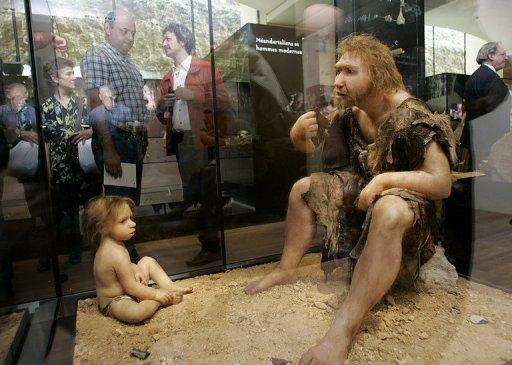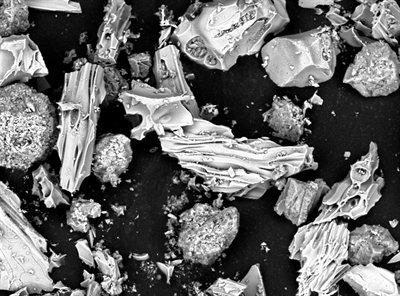Source - http://phys.org/news/2012-07-modern-humans-greater-threat-neanderthals.html#ajTabs

Visitors of the Museum for Prehistory in Eyzies-de-Tayac look at a Neanderthal's reconstruction in 2004.
Modern humans were likely a greater threat to the Neanderthals than major natural events like extreme cold weather or volcanoes, according to British-led research. Modern humans were likely a greater threat to the Neanderthals than major natural events like extreme cold weather or volcanoes, according to British-led research released on Monday.
The study, published in the Proceedings of the National Academy of Sciences, was based on an analysis of volcanic ash that showed the largest known eruption in Europe came after traces of the Neanderthals had largely disappeared.
Researchers studied the remnants of ash from the Campanian Ignimbrite eruption about 40,000 years ago in sites in Greece, the Aegean Sea, Libya, and four central European caves.
"Our results confirm that the combined effects of a major volcanic eruption and severe climatic cooling failed to have lasting impacts on Neanderthals or early modern humans in Europe," said the study.
"We infer that modern humans proved a greater competitive threat to indigenous populations than natural disasters."

Tiny glass fragments from a 40,000-year-old volcanic eruption suggest Neanderthals were wiped out by competition with modern humans and not by climate change. Picture by Suzanne MacLachlan
Neanderthals lived in parts of Europe, Central Asia and the Middle East for up to 300,000 years but appear to have vanished some 40,000 years ago. Why they died out is a matter of sharp debate.
Earlier theories have hypothesized that these upright but stooped cavemen were crowded out by modern humans, and that their demise may have been hastened by a series of harsh winters.
More information: “Volcanic ash layers illuminate the resilience of Neanderthals and early modern humans to natural hazards,” by John Lowe et al. PNAS, 2012. Journal reference: Proceedings of the National Academy of Sciences
(c) 2012 AFP